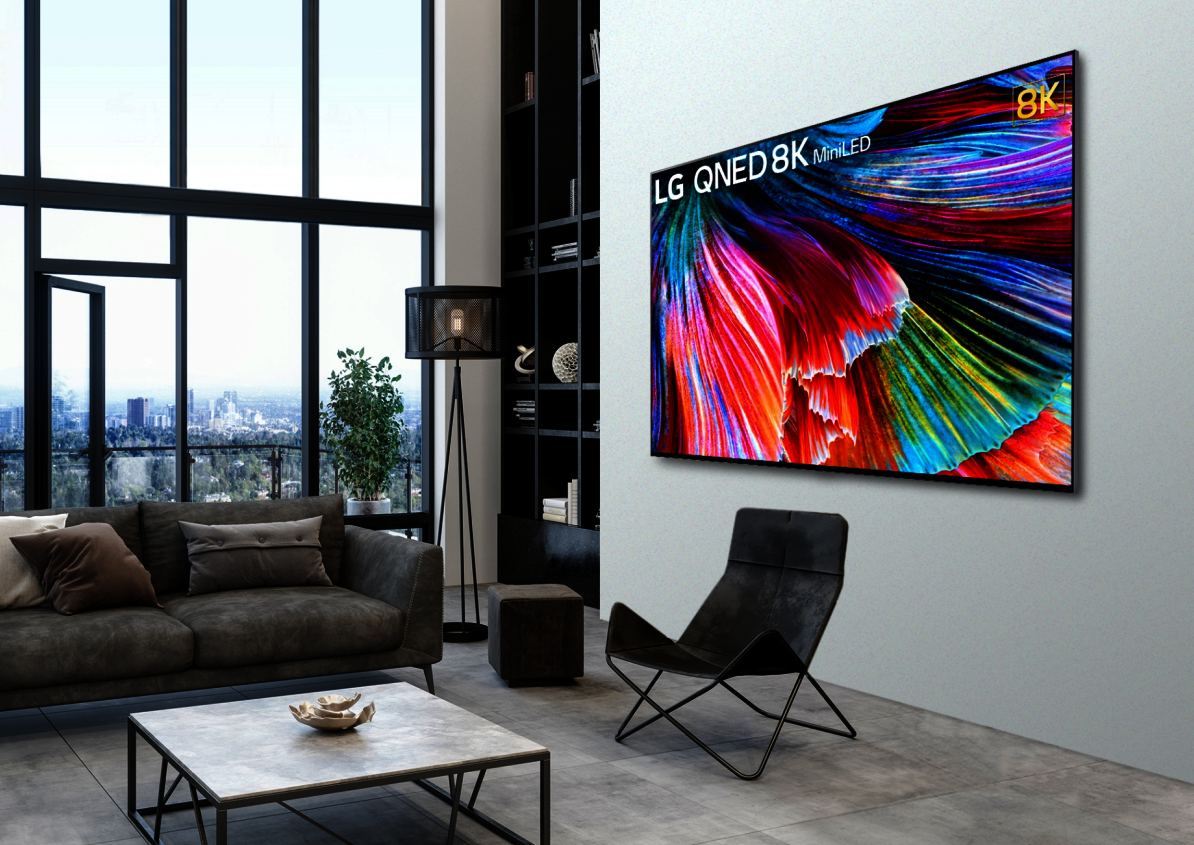Not content with dominating the market for OLED TVs, LG Electronics has just announced that its QNED NanoCell TVs fitted with Mini-LED displays are going on sale globally this month.

LG has four QNED Mini-LED NanoCell TVs in its lineup this year, with the flagship bearing QNED99 (pictured) leading the way, followed by the QNED95, QNED90 and QNED85 models.
The first two are 8K TVs, while the latter two models are 4K resolution, and all four are available in 65-inch and 75-inch sizes, with a larger 86-inch panel available for the 8K QNED99 and 4K QNED90.
The big draw is the Mini-LED display technology, which is new in LG NanoCell lineup for 2021. Mini-LED is really just an advanced form of LCD that uses much smaller LEDs than those found in normal Full Array Local Dimming TVs. The advantage of using smaller LEDs is that many more of them can be squeezed onto a display. Combined with quantum dots, it helps to increase both the overall brightness of the TV and the number of dimming zones it has.
LG said the high-end 86-inch 8K QNED99 TV boasts around 30,000 LEDs, which translates to a whopping 2,500 local dimming zones. Due to this, it has a contrast ratio that’s ten-times better than that of conventional LCD tech, LG claimed
LG isn’t the only company launching Mini-LEDs. TCL debuted its 6-Series and 8-Series Mini-LED TVs last year, and Samsung Electronics’ high-end QLED TVs this year will all have the miniaturised LEDs too.
Samsung, which doesn’t sell OLED TVs, has claimed that its Mini-LED TVs actually match the level of contrast seen in LG’s iconic sets. Of course, LG merely says that Mini-LED comes close to the contrast ratio of OLED – because, after all, it doesn’t want to overshadow what it has long lauded as the superior display technology.
In truth LG’s claims are probably more realistic as LCD technology will never be able to match the pure blacks of OLED. But Mini-LED TVs will be a good option for those who want a brighter picture than what OLED is capable of.
Regarding specs, LG said the two 8K models will feature its latest Alpha 9 Gen 4 processor that first seen in its high-end 2021 OLED TVs. The LG QNED90 and QNED85 will make do with the older 7 Gen 4 AI processor that powered last year’s top-of-the-line OLEDs.
All four NanoCell TVs have native refresh rates of 120Hz and they throw in support for HDR in the shape of Dolby Vision IQ, HDR10, HLG, HDR 10 Pro and HgiG. Gaming features such as Auto Low Latency Mode, Variable Refresh Rate and AMD FreeSync are all present and correct. The flagship LG QNED99 will also be one of the first TVs in the world to support Dolby Vision gaming at 4K/120Hz, joining the LG C1 and LG G1 OLED models that received that capability via a firmware update this week.
Other capabilities of note include Dolby Atmos, built-in Amazon Alexa and Google Assistant voice controls, Apple AirPlay 2 connectivity, ThinQ AI, the LG Magic Remote and all-new webOS 6.0 smart TV operating system.
LG also reiterated the low environmental impact of this year’s NanoCell TVs, saying they have all received an Eco-Product certification from Switzerland’s SGS Société Générale de Surveillance SA.
LG Home Entertainment Company President Park Hyoung-sei assured consumers that the LG QNED models represent an “evolutionary leap forward” that achieve the “pinnacle of LCD picture quality”.
The company hasn’t yet announced any official prices for the NanoCell QNED TVs, but some online retailers have already listed some of the models. The flagship QNED99 will cost around £3,999 for the 65-inch version, £5,999 for the 75-inch model and £7,999 for the biggest 86-incher.
If 4K resolution is more than enough to satisfy your Mini-LED lust, then the QNED90 will be a more cost-effective option priced at £2,499 for the 65-inch size and £3,699 for the 75-inch display. Pricing for the 86-inch QNED90 isn’t yet available.
A quick word of warning, by the way. LG's QNED TVs are not to be confused with the QNED display technology that's currently under development at Samsung Display. The Samsung QNED prototypes are an entirely new self-emissive technology that is said to be similar and potentially superior to OLED. Samsung has reportedly made significant progress with it QNED displays, though they probably won't be commercially available for a couple of years yet.